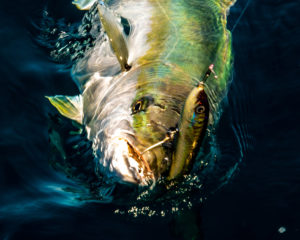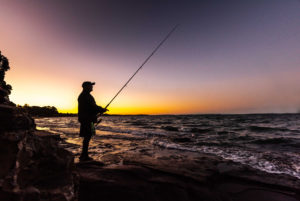
Tackle for releasing as well as catching
The principles and guidelines involved in the FishCare programme are intended to help fishers reduce their impact on the fishery where practical, possible and safe.
When choosing fishing tackle, catching fish is clearly the purpose for the purchase. There is a second priority that fishers must consider – what if I catch a fish and have to release it? Does my tackle and practices allow fish to have their best chance of survival if released?
Fishing has so many variables that it is really only the fisher who can make the best call on what fish to keep or which can be released in good condition. The FishCare principles are designed to help the fisher make these choices, and while the principles don’t change, these recommended practices are not always ‘set in stone’.
Hooks

Circle hooks are generally better to use than octopus or suicide style hooks because they are less likely to gut-hook fish. Recurved hooks are an example of a circle hook. At the same time, it is impossible to guarantee you won’t ever gut-hook undersized fish with circle hooks as some small fish are determined and if you give them enough time,they can scoff even large hooks or harm themselves in the process. This means a number of factors will make a difference to hook choice e.g. how you fish, what species you are targeting, and even how aggressively the fish are biting on the day. Circle hooks don’t have a standard size rating and may differ in size between brands, so this guide is a starting point for fishing and targeting these species.
Our guide for using circle hooks is:
6/0 or larger for blue cod
5/0 or larger for snapper
4/0 for or larger for tarakihi
See the NZ Fishing News series of articles for more detailed information – READ MORE
Consider this –
- Stay connected. Letting a fish run with the bait or leaving a rod unattended in the holder means fish have more opportunity to swallow the hook.
- If you are hooking undersized fish, change your methods by using larger hooks or switching to lures.
- Removing the barb from your hook by flattening it with pliers or filing it down on large hooks, is another step to helping reduce risk as fish can often be released by flicking the fish off the hook so they do not have to be handled. Fishers who accidentally hook themselves will appreciate an easier removal of the hook as well.
Lures

Lures help fishers target legal-sized fish and fewer fish are likely to swallow a lure than a bait. Some styles of lure (like stickbaits or swimming minnow-style hard-body lures) come with treble hooks.
Treble hooks can damage the fish’s gills, face or eyes, and this can be fatal. Changing the treble hooks to inline hooks of similar size and weight is the best approach. Treble hooks can be unsafe for fishers as well, with a thrashing fish impaling a hand or leg with the exposed points.
Nets & Towels
Rubber mesh nets are best, but fishers still have to be careful when bringing a fish aboard and during subsequent handling.
NO towels. Fabric, wet or dry, removes the fish’s protective mucus.
Wet hands are better than dry hands or cloth.
Wet rubber gloves are best if you need to touch the fish.
See the NZ Fishing News article on releasing fish, towels and nets – READ MORE
When you are choosing fishing tackle, please consider the above principles and practices and choose gear that will be helpful when releasing unwanted fish as well as gear that will help you catch your dinner.



